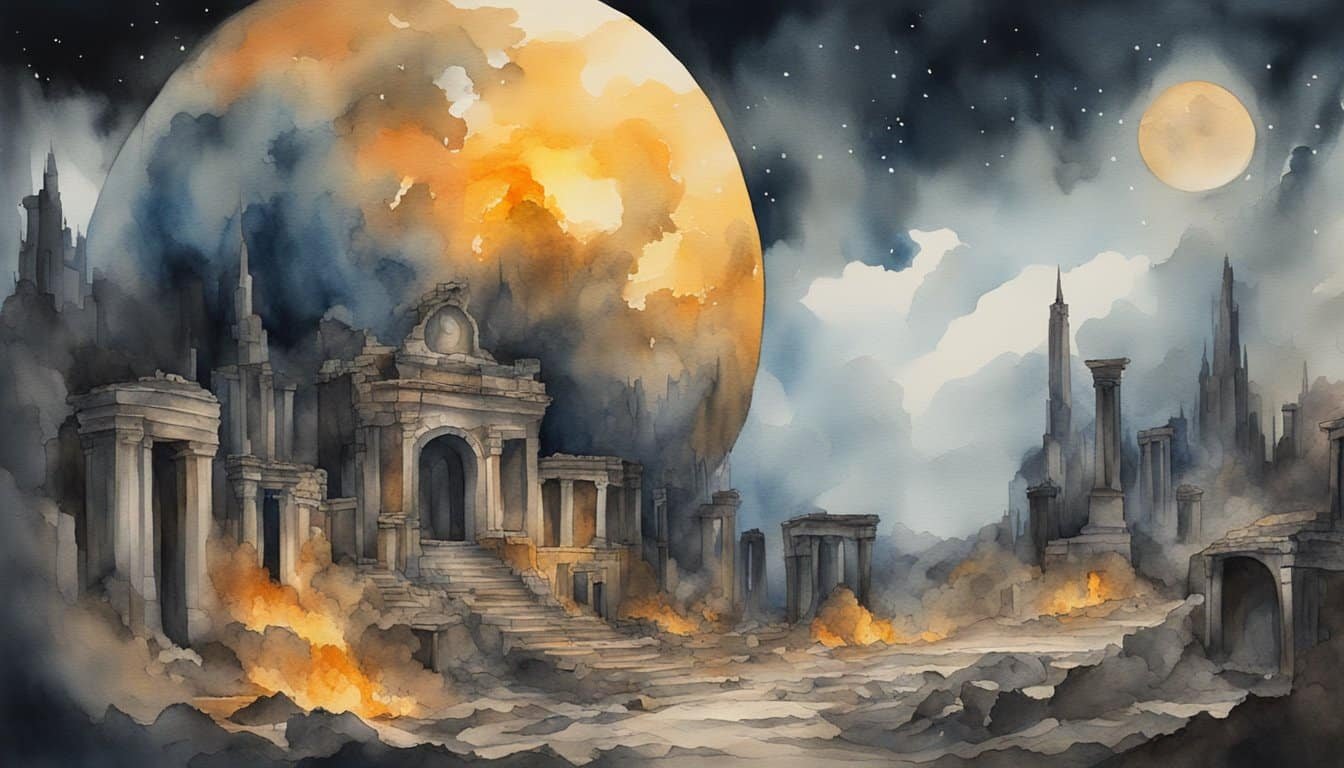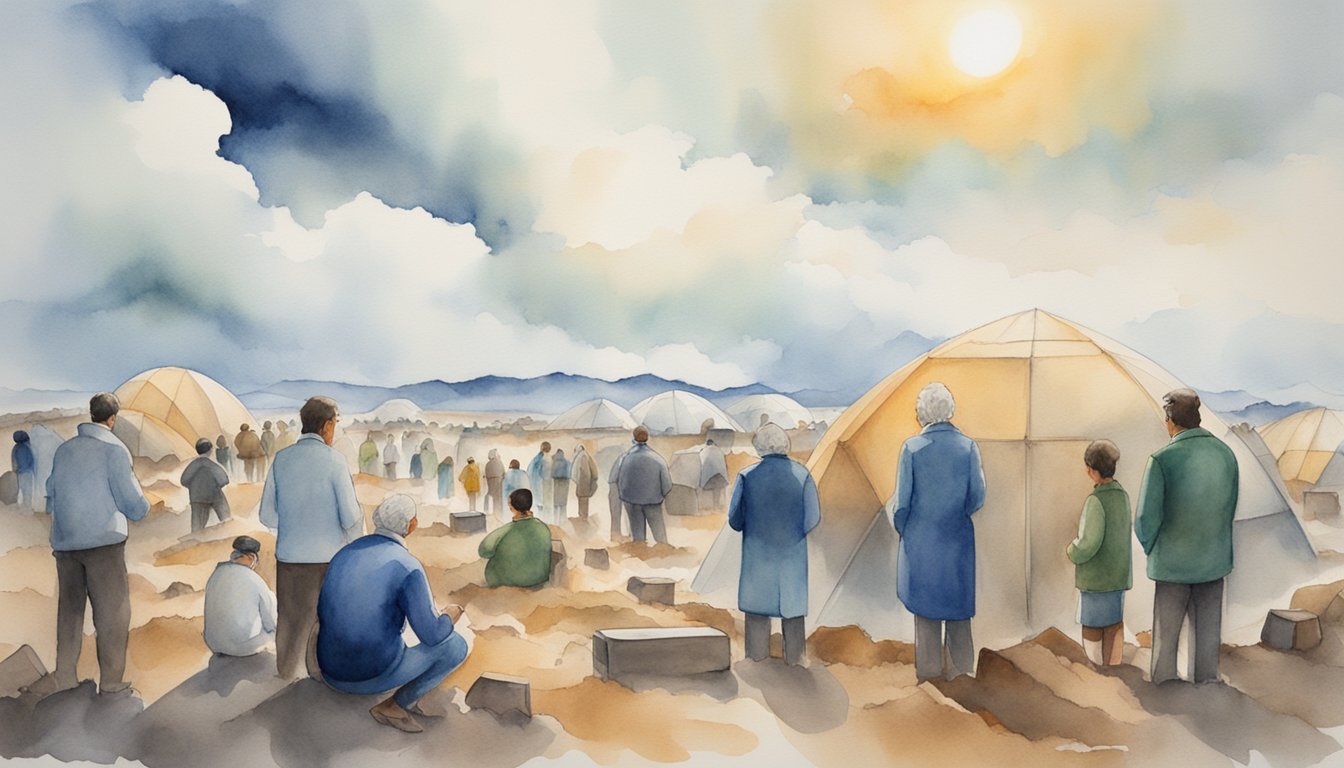End of the World Scenarios
In contemplating the future of our planet, some scenarios arise that could spell the end of the world as we know it. These range from celestial events to environmental crises and human-triggered disasters.
Astronomical Catastrophes
The cosmos, vast and full of mysteries, holds potential threats like asteroids and comets. An asteroid impact with Earth could release energy equivalent to millions of nuclear bombs, causing widespread destruction. NASA’s Planetary Defense Coordination Office keeps a vigilant watch for such Near-Earth Objects (NEOs), tracking their orbits and assessing potential risks.
Environmental Disasters
Climate change represents a significant environmental disaster with the potential to trigger a global catastrophe. Rising temperatures could lead to severe weather conditions, loss of biodiversity, and critical challenges for human survival. The energy imbalance on Earth due to increased greenhouse gases is a central focus for nations, as they strive to mitigate adverse effects and adapt to changing climates.
Human-Induced Apocalypses
The specter of nuclear war looms as a human-induced apocalypse with the potential to destroy civilization. The stockpiling of weapons by countries like Russia and the ongoing tensions in regions such as Ukraine escalate this risk. It’s not just war that poses a threat, but also other forms of human error or intent that could unleash unfathomable consequences on a global scale.
Predictions and Prophecies

From ancient scrolls to modern-day algorithms, humanity has long been fascinated with predictions about the end of the world. This section touches on the historical and current forecasts that have aimed to outline the final chapters of our story.
Historical Predictions
Throughout history, there have been many predictions regarding the end of the world. Notable figures like Michael Stifel, a German mathematician and preacher, calculated that Judgement Day would occur on October 19, 1533. Similarly, Christopher Columbus is said to have predicted the world would end in 1658. The famed Nostradamus has been credited with foreseeing many future events, and some interpret his quatrains as predicting a devastating “king of terror” descending upon Earth.
Modern-Day Forecasts
As time moved forward, so did the nature of doomsday predictions. The technological scare known as Y2K had many believing that the turn of the millennium would trigger a catastrophic computer failure. In more recent years, Harold Camping predicted the world would end on May 21, 2011, with a series of rolling earthquakes and the Rapture. While these modern forecasts have varied in their specifics, one constant remains: the date comes and goes, and life on Earth continues.
These forecasts and prognostications, whether based on religious texts like the Bible or on other forms of prophecy, continue to capture the world’s imagination, serving as a reminder of the enduring allure of the unknown.
How Do Dinosaur Extinctions Provide Insights into Predictions About the End of the World?
Studying dinosaur extinctions reveals critical patterns in Earth’s history. Analyzing prehistoric timelines and species sheds light on environmental changes and catastrophic events, helping scientists predict future trends. Understanding these mass extinctions allows researchers to assess potential threats to current ecosystems and the ongoing impact of human activity on life on Earth.
Humanity’s Response and Preparation

In anticipation of possible global catastrophes, humanity has developed numerous strategies and systems to monitor, defend, and prepare for such extreme events. Scientific endeavors and international collaborations play crucial roles, just as cultural reactions and psychological preparedness impact how societies approach the concept of the end of the world.
Scientific Monitoring and Defense
Scientists actively work to mitigate potential disasters by employing advanced technologies for scientific monitoring and defense. The Doomsday Clock, maintained by the Bulletin of the Atomic Scientists, symbolizes the likelihood of a man-made global catastrophe, represented metaphorically as “minutes to midnight.” Research into asteroid detection and defense systems is ongoing to protect civilization from extraterrestrial dangers.
Global Cooperation and Treaties
It’s essential for nations to engage in global cooperation and treaties to prevent escalation and miscalculation that could lead to widespread disaster. History shows that treaties can help, such as the ones born out of the Manhattan Project’s outcomes that aim to prevent the spread of nuclear weapons. In the modern era, climate accords and agreements about the ethical applications of artificial intelligence also reflect such leadership and cooperation.
Cultural and Psychological Reactions
Culture influences how people perceive and react to the threat of apocalypse or major disasters. Psychologists study the cultural and psychological reactions to these fears, noting the importance of managing anxiety and maintaining resilience. Art, literature, and film often explore doomsday themes, indicating a blend of fear, fascination, and contemplation within society at the prospect of extinction or major civilization shifts.

